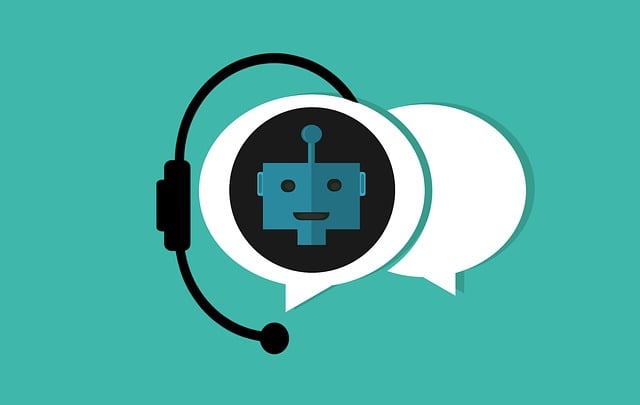AI chatbots are transforming small business operations by offering 24/7 customer support, instant responses, and data-driven decision-making through NLP. They automate repetitive tasks, allowing human agents to focus on complex issues, enhancing efficiency and personalization. To implement AI chatbots effectively, small firms should select the right AI assistant or AI Customer Service solution based on their needs, prioritize customizable options, and ensure seamless integration with existing systems. The guide offers steps for selecting a platform, designing conversation flows, training models, monitoring performance using KPIs like user satisfaction and response accuracy, and continuously optimizing the AI assistant's effectiveness.
In today’s digital age, small firms are continually seeking innovative ways to enhance customer service while optimizing operational efficiency. Artificial Intelligence (AI) chatbots offer a compelling solution, providing 24/7 support and streamlining routine inquiries. This article explores the strategic deployment of AI chatbots for small businesses, from understanding their benefits to identifying key areas of integration. We’ll guide you through choosing the right AI customer service solution, implementing your chatbot, and measuring success.
- Understanding AI Chatbots and Their Benefits for Small Firms
- Identifying Key Areas for AI Assistant Integration
- Choosing the Right AI Customer Service Solution
- Implementing AI Chatbots: Step-by-Step Guide
- Measuring Success and Continuous Optimization
Understanding AI Chatbots and Their Benefits for Small Firms

AI chatbots are revolutionizing the way small firms interact with their customers, offering a range of benefits that can significantly boost business operations and customer satisfaction. These intelligent assistants use natural language processing (NLP) to understand and respond to user queries, providing quick and accurate information. For small businesses, this means round-the-clock availability, instant response times, and cost-effective solutions to enhance customer service without the need for a large support team.
By implementing an AI chatbot, firms can automate repetitive tasks, such as answering frequently asked questions or handling basic customer inquiries, allowing human agents to focus on more complex issues. This not only improves efficiency but also enables businesses to provide personalized and engaging experiences. Moreover, AI assistants can collect valuable customer data, offering insights that drive better decision-making for targeted marketing strategies, product development, and overall business growth.
Identifying Key Areas for AI Assistant Integration

Small firms looking to implement AI chatbots can significantly enhance their operations by focusing on strategic areas for integration. The key lies in identifying customer touchpoints where an AI assistant can provide immediate, personalized, and efficient support. For instance, AI chatbots excel at handling frequent customer inquiries, offering 24/7 availability without the need for round-the-clock human agents. This ensures faster response times and improved customer satisfaction.
Additionally, these assistants can be deployed to streamline repetitive tasks, such as scheduling appointments or providing product recommendations. By automating these processes, employees can focus on more complex responsibilities, increasing overall productivity. AI customer service, when implemented effectively, allows small businesses to deliver a high-quality experience while optimizing resource allocation and reducing operational costs.
Choosing the Right AI Customer Service Solution

When considering AI chatbot deployment for your small firm, selecting the right AI assistant or AI customer service solution is paramount. The first step involves evaluating your business needs and understanding the capabilities of available options. Different AI chatbots cater to various tasks, from simple inquiry responses to complex issue resolution. Assessing factors like conversational abilities, integration with existing systems, scalability, and cost-effectiveness will ensure you choose a fit that aligns with your operations.
Additionally, consider the importance of customization and adaptability. A versatile AI customer service solution should be able to learn and evolve based on interactions, continually improving its performance. Look for providers who offer training and support to help acclimate your team and maximize the AI’s potential. This strategic approach will not only enhance customer satisfaction but also streamline operations by automating routine tasks, allowing human agents to focus on more complex issues.
Implementing AI Chatbots: Step-by-Step Guide

Implementing AI Chatbots: Step-by-Step Guide
1. Define Use Cases and Goals: Start by identifying specific areas where an AI chatbot can enhance your small firm’s operations, such as customer service, sales, or support. Set clear objectives for what you want to achieve with the chatbot, whether it’s improving response times, handling frequent queries, or providing 24/7 assistance.
2. Choose the Right Platform: Select an AI chatbot platform that aligns with your business needs and technical capabilities. Consider factors like ease of integration with existing systems, natural language processing (NLP) capabilities, customization options, and pricing. Popular choices include Dialogflow, IBM Watson Assistant, and Microsoft Bot Framework.
3. Design Conversation Flows: Map out the conversations you expect to have with your AI assistant, creating a flowchart or decision tree. Define user intents, entities, and responses accordingly. Ensure the chatbot can handle various scenarios and provide accurate, contextually relevant answers.
4. Train and Test the Model: Feed the platform with relevant data and examples to train the AI model. The more diverse and high-quality the training data, the better the chatbot’s performance will be. Thoroughly test the chatbot in different scenarios to identify and fix any inaccuracies or gaps in its knowledge base.
5. Integrate into Existing Systems: Seamlessly integrate your AI chatbot with your website, CRM, ticketing systems, or other relevant software to ensure a smooth user experience. Proper integration ensures that customer interactions are efficiently managed and data is shared effectively between the chatbot and human agents.
6. Launch and Monitor Performance: Deploy the chatbot on your live platform and closely monitor its performance using analytics tools provided by the platform or third-party solutions. Regularly review user interactions, feedback, and key metrics to make data-driven improvements. Continuously update the knowledge base and refine conversation flows based on user behavior and feedback.
Measuring Success and Continuous Optimization

Measuring the success of AI chatbot deployment is key for small firms to ensure their investment delivers tangible benefits. Key performance indicators (KPIs) should focus on user satisfaction, response accuracy, and reduction in handling time for customer service queries. By tracking these metrics, businesses can gauge the value brought by the AI assistant and identify areas for improvement. For instance, consistent high user satisfaction rates coupled with precise responses indicate a well-optimized chatbot, while longer handling times might signal the need to refine the conversational flow or enhance the underlying knowledge base.
Continuous optimization is essential to keep up with evolving customer needs and market trends. Regularly analyzing interaction logs and user feedback allows for iterative improvements in the AI chatbot’s capabilities. This ongoing process ensures that the virtual assistant remains effective, relevant, and aligned with the latest developments in AI customer service.
